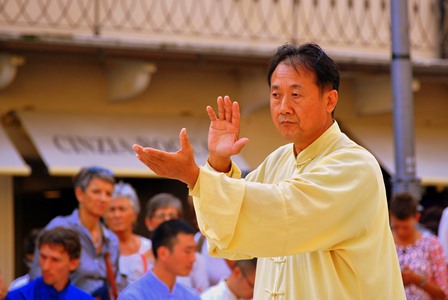 Research by a respiratory expert from Royal Brompton & Harefield NHS Foundation Trust has shown that the ancient art of Tai Chi is a lower-cost, more easily accessible alternative to conventional rehabilitation for those suffering from COPD.
Research by a respiratory expert from Royal Brompton & Harefield NHS Foundation Trust has shown that the ancient art of Tai Chi is a lower-cost, more easily accessible alternative to conventional rehabilitation for those suffering from COPD.
Professor Michael Polkey, respiratory consultant at Royal Brompton Hospital and professor of respiratory medicine at Imperial College, London, joined forces with Chinese researchers from the State Key Laboratory of Respiratory Disease in Guangzhou.
The study, which is published this week by the journal Chest, revealed evidence that Tai Chi is a viable alternative to the usual form of management for improving respiratory function, pulmonary rehabilitation (PR).
Tai Chi, which originated in China, involves stretching, breathing, and coordinated movement and requires no special equipment.
Professor Polkey worked with Chinese investigators on the hypothesis that, for patients being treated with medication to manage their COPD symptoms, Tai Chi could help improve the quality of life when compared to a course of classical western style PR.
The study tracked 120 patients with COPD in rural China who had never used a bronchodilator (a medication that makes breathing easier by relaxing the muscles in the lungs and widening the airways).
After beginning daily treatment with the bronchodilator indacaterol, subjects were randomly assigned to groups receiving traditional PR or Tai Chi. Both the Tai Chi and PR groups showed similar improvements in Saint Georges Respiratory Questionnaire (SGRQ) scores, a standard measure of health status in patients with diseases causing airway obstruction.
After twelve weeks, a clinically significant difference in SGRQ scores emerged favouring Tai Chi. Similar trends were noted in the performance of a six-minute walk test.
“This study demonstrates that a low-cost exercise intervention is equivalent to formal pulmonary rehabilitation, and this may enable a greater number of patients to be treated,” said Professor Polkey. “Physical activity is key to reducing symptoms in COPD. We do recommend PR, but our study shows that Tai Chi is a viable alternative when there is no local PR service. We encourage pulmonary rehabilitation providers to consider offering Tai Chi as an alternative therapy that patients would then be able to continue unsupervised in their own home.”
He added: “The study has implications for the UK too. Provision of PR can be patchy in some parts of the country and practising Tai Chi offers a more easily accessed alternative. In addition, after a course of PR has been completed, patients with COPD may well benefit from continuing Tai Chi at home, or within a class.”
